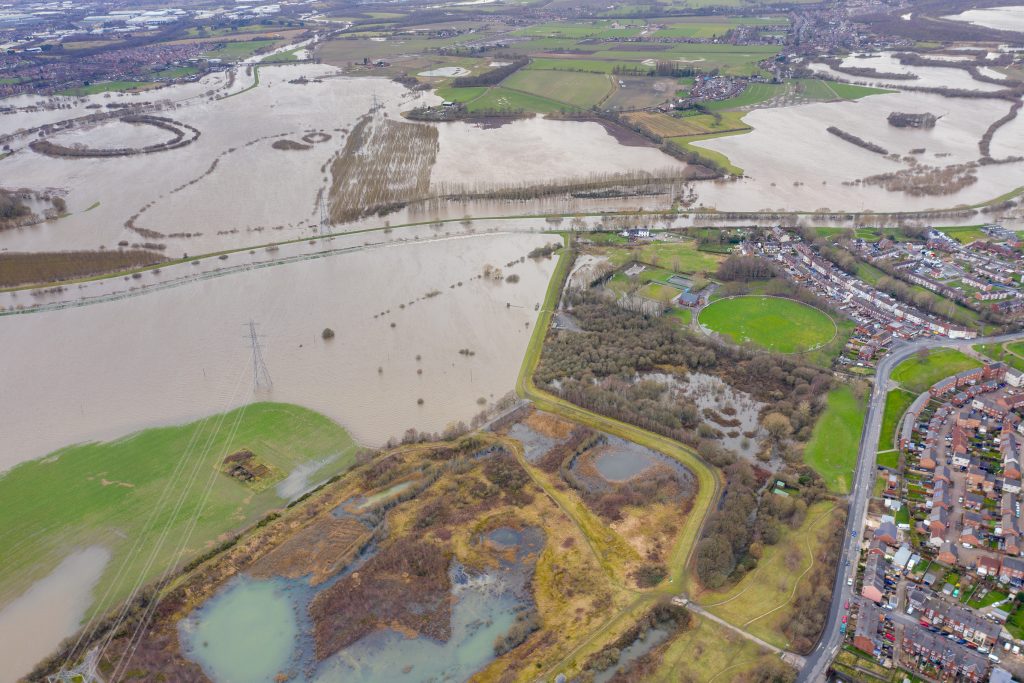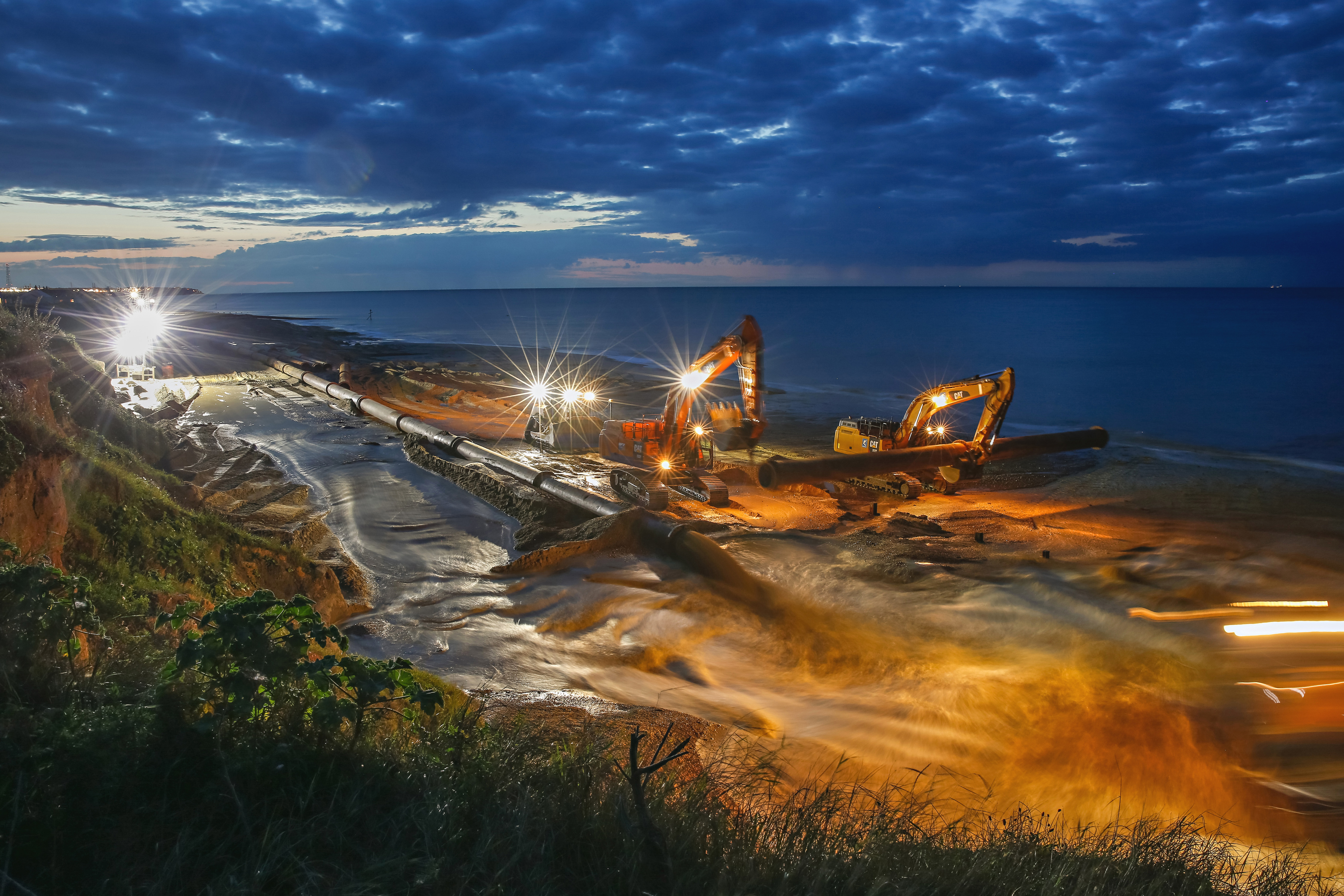
The Environment Agency’s new flood strategy makes the case for a nation more resilient to the impact of climate change.
The change in language is stark when it comes to flood strategy.
Nine years ago, when the Environment Agency last published an overarching flood strategy for England, it was somewhat tentative in describing the way global warming could affect the natural and built environment.
“The climate is changing and this is likely to have an impact on flooding and coastal erosion,” ventured the Environment Agency in 2011.
Fast forward to 2020 and the tone is very different.
“It is essential that we get ready for the unavoidable impacts of climate change,” declares its latest strategy.
It quotes the Intergovernmental Panel on Climate Change, which has warned that extreme sea level events that used to occur once a century are now projected to occur at least annually in most locations by 2100 under all emissions scenarios.
“Higher sea levels will cause waves to carry greater energy to shore, which will affect our coastal defences and cause further impact to communities already affected by coastal flooding and erosion,” adds the Environment Agency.

“As a nation we need to be climate ready so that we are resilient to future climate hazards and potential economic shocks that impact our prosperity.”
Environment Agency director of flood risk strategy and national adaptation Julie Foley says the organisation has reacted decisively to the latest climate science.
“It is a very different and bold strategy – a lot has happened since 2011,” she told delegates at the virtual NCE Future of Floods conference in November.
For every house flooded, 16 other people lose utility and infrastructure
“We have had some major flood events across the country that we’ve learned a huge amount from; we’ve had a major investment programme in new flood and sea defences; and we have had overwhelming evidence about the impacts of climate change – we now know climate change is unavoidable and we have to be much better at adapting for a range of climate futures.”
The latest document – formally entitled the National Flood and Coastal Erosion Risk Management Strategy for England – outlines a vision of a nation resilient to whatever nature throws at it for the rest of this century.
It sets out three long-term issues to be addressed: climate resilient places; today’s growth and infrastructure resilient in tomorrow’s climate; and a nation ready to respond and adapt to flooding and coastal change.
Foley says the Environment Agency realised very quickly when it started working towards the latest strategy in early 2019 that it was going to have to fundamentally rethink its approach. It soon realised this would mean achieving resilience as well as managing risk, she adds.
Natural flood management is often about lots of small scale interventions
“There is a traditional concept of stopping flooding, but you can’t stop all flooding – not least because of climate change and rising sea levels.”
The term “adaptive pathways” is used 13 times in the latest strategy – 13 times more than in the previous document.
Foley says this is a deliberate attempt to bring the climate jargon into the mainstream, and explains that it is a critical part of the Environment Agency’s approach to making the nation more flood resilient.
“We often model one climate change scenario, but we’ve learned it is virtually impossible to plan for one climate future,” she explains. “It is better to plan for a range because the impacts will vary in different places. There will be population growth and assets will deteriorate so there is a combination of factors meaning we have to be more agile in the way we plan for future flood risk.
“In the strategy we talk about preparing for 2°C global warming but planning for up to 4°C. A practical way we are doing that is building climate change scenarios into the way we design flood risk schemes so when they are built they can account for a range of worst case scenarios. It’s a precautionary approach.”
Building in resilience – using an adaptive pathways approach – does not just mean larger, complex engineering projects. It can also mean thinking differently.
“Adaptive pathways doesn’t [always] mean bigger, harder-engineered solutions,” says Foley.
“If we had a higher than expected flood event next decade, how could we store some of the water on a large natural floodplain? It could be making properties more resilient to floods when they do happen; it can be combinations of measures.”
Meanwhile, the government’s “building back better” policy means looking at the wider repercussions of floods that have happened and attempting to more effectively protect whole communities.
“When it floods, there are water treatment plants and electricity substations under water that have an impact wider than the flood waters. For every house flooded, 16 other people lose utility and infrastructure,” explains Foley. “We need to think about building back better so telecoms and roads are flood resilient.”
Civil engineers have a major role to play in adapting their own thinking to the climate science and helping create more useful infrastructure, Foley says.
“I would welcome engineers of the future thinking about a much more integrated approach to management of water – sometimes we are dealing with having too much water in a catchment, but that same catchment will be struggling with drought conditions months later.
“Natural flood management is a soft engineering solution that needs a lot of thought and it offers a way of thinking about how you store flood waters to benefit places under times of water stress. Are there solutions offering win-win for times of drought and flood? The role of engineers is thinking about places; catchment will be increasingly important.”
There is a significant chunk of funding for this area, she adds.
“We have got £5.2bn for the flood and coastal programme from April 2021 to April 2027. There is a lot for engineers to do to work with planners, developers, businesses and local authorities to be part of the solutions. Think about resilience and how hard engineering solutions complement other solutions. Water needs to be managed in a catchment; it doesn’t respect local authority boundaries.”
Chris Whitlow, modelling expert at civils and scientific consultancy Edenvale Young, believes a major change is needed in flood risk management – and that the Environment Agency’s new strategy is a step in the right direction.
Edenvale Young won the 2018 NCE100 design innovator award after putting a decade of research and development work to use in Sri Lanka.
The project provided the first detailed flood mapping to inform the country’s national risk register. Whitlow says the UK could learn from this project and improve its own modelling.
“We took into account big data sets available, such as ground level data, soils data and land use data. In Sri Lanka we tried to make direct use of regional climate models and local circulation models to amend the characteristics of rain gauges. Science has a long way to go in modelling the future,” Whitlow says.
He also backs the Environment Agency’s new focus on natural flood management.
“It is a great idea and there’s more potential for using it – including tree planting,” he says. “Tree roots allow more water infiltration into the ground and more evaporation through the leaves. The government could also start to encourage water companies to use their reservoirs more than they currently do for flood alleviation.”
This could reduce the role of hard engineering, he predicts, and civils firms will need to adapt.
“I am not a great believer in extensive concrete use in flood alleviation schemes. Sometimes big barriers are a necessity but not on as many occasions as they have been used in the past.
“Civil engineering companies need to think a bit more carefully than they have done in the past. Natural flood management is often about lots of small scale interventions. Different skills are required and we are seeing some of those appearing in the companies we work with.
“Data and software have a role to play – there are massive benefits in using catchment scale models. These can tell you what sort of natural measures to put in and where they should go to make things better rather than worse.”